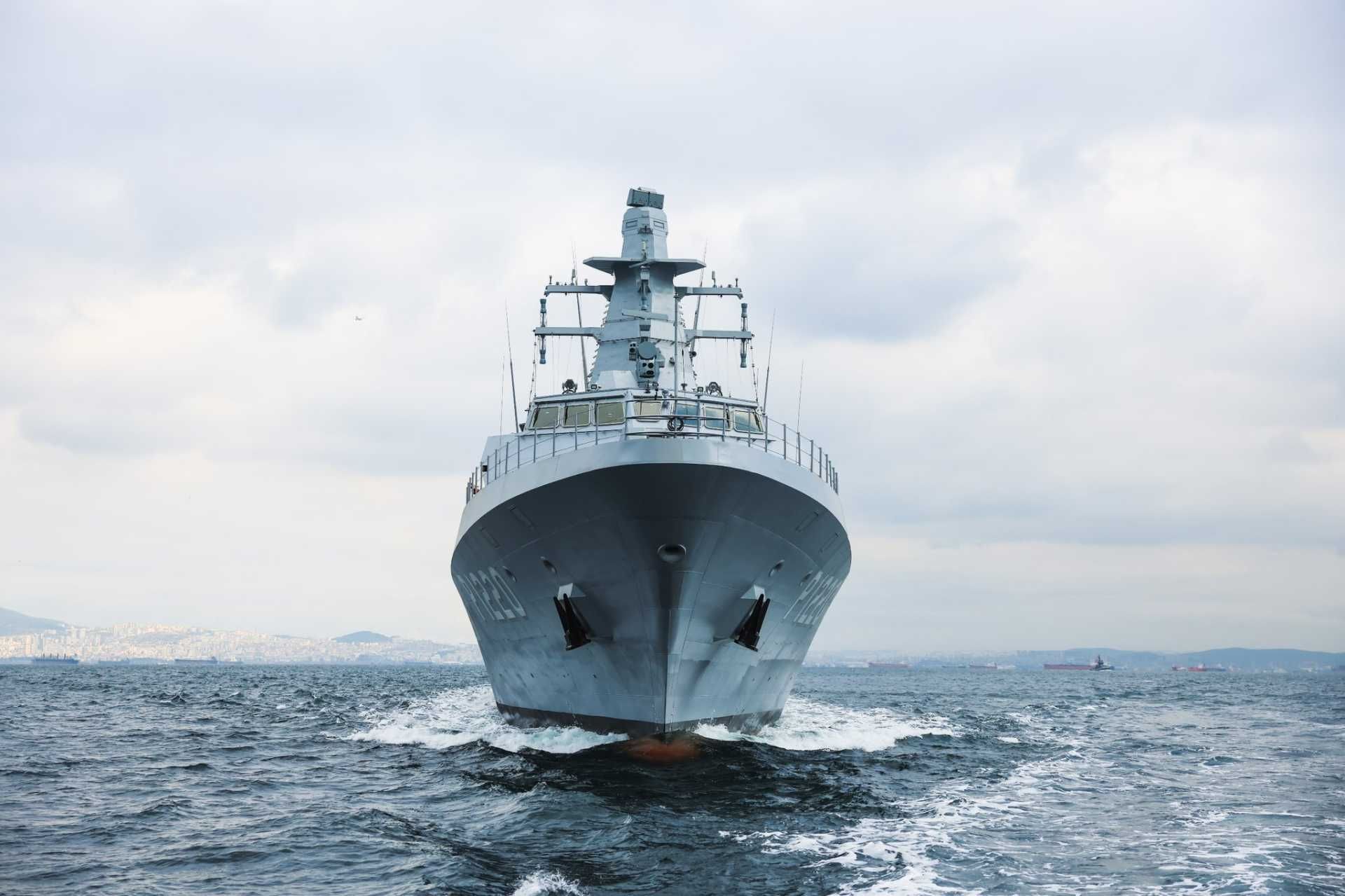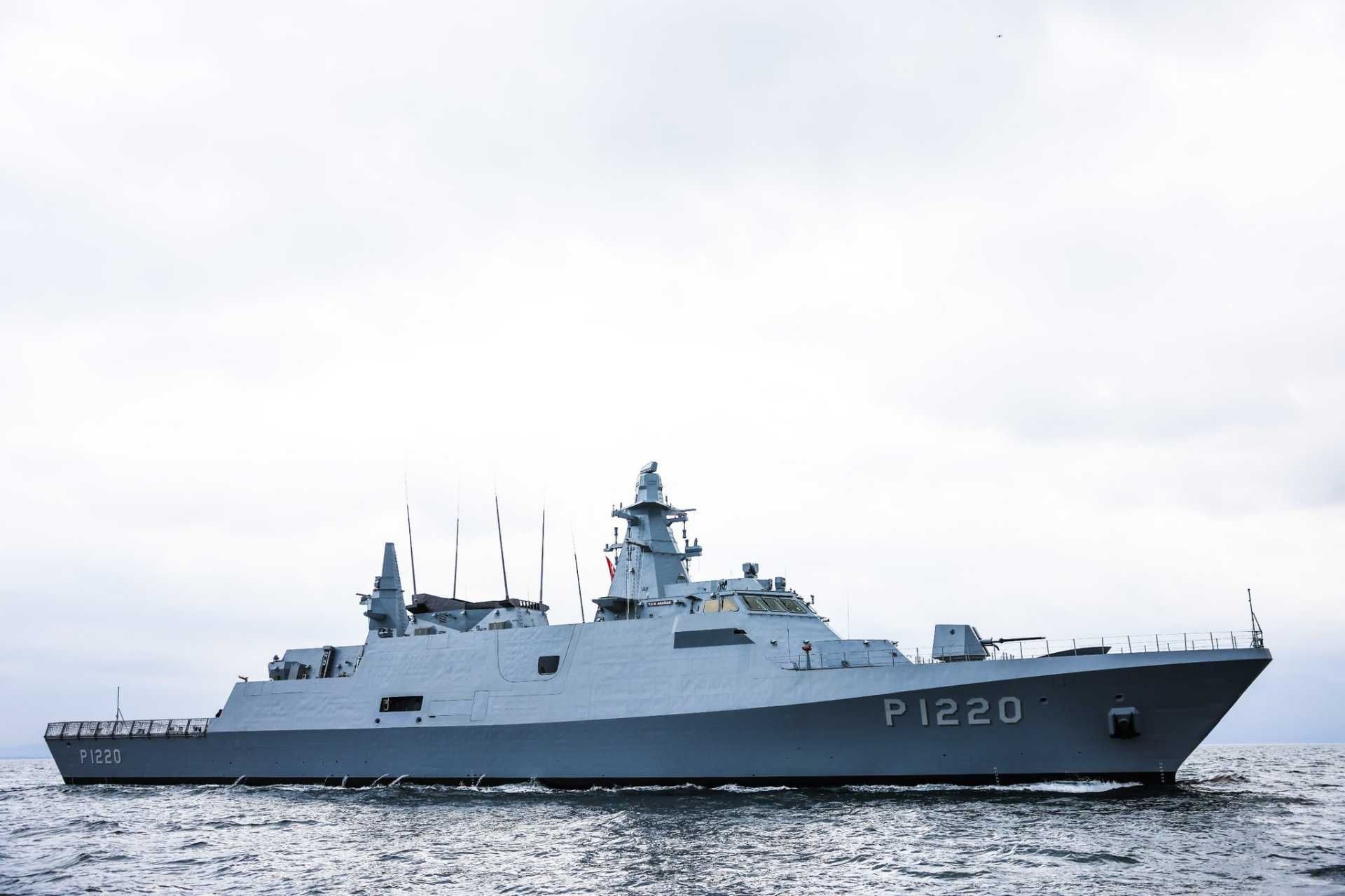Breaking News
Türkiye could secure first Offshore Patrol Vessel sale in Europe as Hisar class emerges as Romania's preferred choice.
According to Defense Romania on March 29, 2025, Romania seems to have decided to acquire one Hisar-class offshore patrol vessel (OPV) from Türkiye. The decision was apparently approved by Romania’s Supreme Council of National Defence (CSAT), which stated that the (unnamed) vessel would significantly contribute to the Romanian Naval Forces and is part of ongoing modernization and procurement programs. The announcement follows an internal meeting where CSAT members evaluated the security context and approved the acquisition of a new light corvette capable of conducting a variety of missions in the shortest time possible. The Romanian Ministry of National Defence has been authorized to initiate the necessary procedures. If finalized, this would represent Türkiye’s first confirmed sale of an offshore patrol vessel to a member state of the European Union.
Follow Army Recognition on Google News at this link

According to sources in Romania’s political and defense sectors, the vessel in question will be a Hisar-class OPV constructed in Türkiye by ASFAT. (Picture source: ASFAT)
According to sources in Romania’s political and defense sectors, the vessel in question will be a Hisar-class OPV constructed in Türkiye by ASFAT. This procurement is expected to have immediate operational impact, though questions remain regarding the involvement of the Romanian defense industry and whether any offset agreements are part of the arrangement. At present, it is unclear how or whether Romania’s local shipbuilding sector will contribute to the delivery, outfitting, or future maintenance of the vessel.
The decision to purchase a single ship has raised attention, as it contrasts with previously stated priorities. In late 2024, Romanian Navy Chief Vice Admiral Mihai Panait outlined plans for acquiring two offshore patrol vessels and three new frigates, with a stated preference for domestic construction in support of Romania’s defense industry. This was also aligned with an objective to advance participation in the European Patrol Corvette program. Romania has a history of building modern naval vessels at its Galați shipyard, owned by Damen, including vessels for other NATO navies. An earlier procurement program involving four Gowind 2500 multi-role corvettes, awarded to France’s Naval Group and intended for construction in Constanța, was cancelled following disagreements between Naval Group and the Constanța shipyard.
The current procurement appears influenced by the recent start of offshore gas drilling approximately 160 kilometers into the Black Sea, a zone considered exposed and inadequately protected by Romania’s current naval assets. Romanian analyst Dacian Draco has suggested that the decision to acquire an already-built ship from Türkiye may be motivated by the need for rapid delivery, as Romania’s own shipbuilding programs typically require two to three years for completion. A previous attempt to acquire the last OPV built at Galați—originally intended for Pakistan—was reportedly rejected by the Pakistani side, prompting Romania to consider alternatives.

The Hisar-class vessel is based on the design of the Turkish Navy’s Ada-class corvettes and is categorized as an offshore patrol vessel. (Picture source: ASFAT)
The Hisar-class vessel is based on the design of the Turkish Navy’s Ada-class corvettes and is categorized as an offshore patrol vessel. The ship’s development falls under the MILGEM (National Ship) project. Hisar-class ships are designed for a wide range of missions, including intelligence, surveillance and reconnaissance (ISR), search and rescue (SAR), counter-terrorism, maritime interdiction, naval special operations, air and naval operations, electronic and acoustic warfare, coastal bombardment, protection of maritime transport, amphibious support, and training.
Hisar-class ships are built according to a “fitted for but not with” concept, which allows for modular installation of weapons and sensors at later stages. The vessels are constructed for cost-effectiveness in both acquisition and operation, with low radar cross-section, reduced acoustic and magnetic signatures, and high survivability features. The vessel Romania is set to acquire measures 99.56 meters in length, with a beam of 14.42 meters, a draft of 3.77 meters, and a displacement of 2,300 tons. It is powered by a CODLOD (Combined Diesel-Electric and Diesel) configuration: four diesel engines and two electric motors driving two controllable-pitch propellers. Maximum speed is 24 knots, with a cruising speed of 12 knots and a range of 4,500 nautical miles. The ship is designed for 21-day endurance and has a crew capacity of 104 personnel.
Hisar-class OPVs carry a suite of sensors, including ASELSAN’s MAR-D 3D search radar, AKR-D fire control radar, Denizgözü AHTAPOT-S electro-optical search system, METEKSAN’s YAKAMOS 2020 hull-mounted sonar, ASELSAN’s Piri-KATS infrared search and tracking system, and TÜBİTAK’s YELKOVAN electronic support system. The combat management system is HAVELSAN’s ADVENT SYS, which provides real-time situational awareness and fire control.
Standard armament includes a 76 mm naval gun produced by MKE, two 12.7 mm Targan remote weapon stations by UNIROBOTICS, and the capacity to launch ROKETSAN’s Atmaca anti-ship missiles. Some configurations also include ASELSAN’s Gökdeniz 35 mm close-in weapon system (CIWS), eight Hisar-O air defense missiles via a vertical launch system (VLS), and two six-barrel rocket launchers for anti-submarine warfare. The ship includes a helicopter platform capable of operating a 10-ton helicopter such as the S-70B Seahawk, a hangar for one helicopter or one shipborne UAV, and two RHIBs.

The Turkish Navy plans to operate a total of ten Hisar-class offshore patrol vessels, with the first two ships, the TCG Akhisar (P-1220) and TCG Koçhisar (P-1221), already launched in September 2023 and currently undergoing sea trials ahead of scheduled deliveries. (Picture source: ASFAT)
The specific vessel offered to Romania is believed by some sources to be one of two Hisar-class OPVs currently undergoing sea trials, TCG Akhisar (P-1220) or TCG Koçhisar (P-1221), both of which were launched on 23 September 2023. Akhisar began construction in April 2022 and was scheduled for delivery to the Turkish Navy by June 2024. Koçhisar’s delivery was planned for October 2024. This information, although mentioned here in the event of future developments, nevertheless seems unlikely to the writer of this article, because why would a navy sell or transfer a brand new ship? Of course, it is likely that Romania's choice was influenced by the possibility of obtaining one or two vessels that were almost complete and ready for delivery at short notice, given the number of orders in progress in its own shipyards. On the other hand, it is conceivable that Romania could acquire one of the future units planned for the Hisar class.
Sources familiar with the matter have stated that Romania’s initial naval modernization plan included integration of U.S.-made Naval Strike Missiles (NSM) and combat management systems from either Thales (TACTICOS) or Lockheed Martin. The integration of NSM with Turkish systems presents challenges, as current Turkish CMS solutions are not certified to support NSM. Even if such integration were approved, the process would be long and expensive. Therefore, it is unclear whether the Hisar-class vessel delivered to Romania will include such capabilities.
The vessel design offered to Romania is based on specifications from 2005 and was previously proposed to Pakistan, which declined the offer. Some Romanian defense experts consider the current decision a temporary measure and speculate that, if the ship performs well, Romania might order additional units—up to six in the medium term. Romanian sources have also suggested that one ship could be delivered immediately, with a second potentially added, depending on future arrangements and funding.
Observers in Romania have raised concerns about the strategic implications of this acquisition, especially considering the presence of major European shipbuilders within Romania who have not received comparable contracts. The decision may also be interpreted as inconsistent with previous government commitments to prioritize European defense industrial cooperation. Romanian defense journalist Tudor Curtifan has reiterated the importance of involving the domestic industry in future procurement to support long-term strategic objectives.
The Hisar-class OPV procurement comes at a time when Türkiye has also exported MILGEM-type ships to countries such as Ukraine, Pakistan, and Malaysia. If finalized, the Romanian deal would represent Türkiye’s first confirmed sale of an offshore patrol vessel to an EU and NATO member state, following the award to STM by Portugal for the production of two vessels, an auxiliary oiler replenisher and logistics ship, in December 2024. However, several Romanian naval procurement programs have previously been cancelled, and past attempts to finalize similar deals have failed. As such, multiple sources have cautioned that a final outcome should not be assumed until the ship is delivered and operational.


























